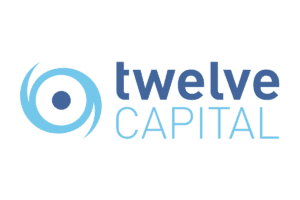What is the purpose of business insurance?
What is the purpose of business insurance?
As a business owner, your company faces different risks every day. The purpose of insurance is to help protect your business from these risks. Business insurance helps protect your business’ financial assets, intellectual and physical property from: Lawsuits.
How do you make a business claim?
Report the Claim As soon as you’re able, contact AMAIC’s 24-hour claims line at 1-888-426-2444 to speak to an experienced claims representative. Your claim will be started immediately, and you will be assigned a claims adjuster.
Why would a business pay premiums to an insurance company?
By paying your premium for insurance policies, such as general liability or commercial property, you will have a financial backstop in place to protect your business against the potentially devastating impact of a major incident.
What types of insurance are not recommended?
15 Insurance Policies You Don’t Need Private Mortgage Insurance. … Extended Warranties. … Automobile Collision Insurance. … Rental Car Insurance. … Car Rental Damage Insurance. … Flight Insurance. … Water Line Coverage. … Life Insurance for Children. More items…
Which is a type of insurance to avoid?
Avoid buying insurance that you don’t need. Chances are you need life, health, auto, disability, and, perhaps, long-term care insurance. But don’t buy into sales arguments that you need other more costly insurance that provides you with coverage only for a limited range of events.
Is an umbrella policy worth it?
Is umbrella insurance worth it? Umbrella insurance is worth it if the value of your assets exceeds your auto or home liability insurance limits. Umbrella policies are relatively inexpensive so they are worth the investment if you have significant assets you’re looking to protect from costly liability claims. Jan 10, 2022
What is L&H and P&C?
“P&C and L&H are two types of insurance licenses. P&C stands for Property and Casualty. L&H stands for Life and Health. An agent with a Property and Casualty license can sell personal lines of insurance like home insurance and car insurance.
Is casualty the same as liability?
Casualty insurance includes vehicle insurance, liability insurance, and theft insurance. Liability losses are losses that occur as a result of the insured’s interactions with others or their property.
How many insurance types are there?
Broadly, there are 8 types of insurance, namely: Life Insurance. Motor insurance. Health insurance. Feb 22, 2022
What are insurance companies?
Insurance corporations are financial intermediaries which offer direct insurance or reinsurance services, providing financial protection from possible hazards in the future.
What is PD No 612?
All rights, title and interest in the policy of insurance taken out by an original owner on the life or health of a minor shall automatically vest in the minor upon the death of the original owner, unless otherwise provided for in the policy.
What is Republic No 386?
386. AN ACT TO ORDAIN AND INSTITUTE THE CIVIL CODE OF THE PHILIPPINES. PRELIMINARY TITLE. Dec 31, 1969
What is the significance of RA 10607 insurance Code?
RA 10607 extends the period of validity of the licences of insurers, insurance agents and insurance brokers from one year to three years. The transitory provision of RA 10607 states that licences that would have expired by June 30 2013 will be valid until December 31 2015. Jan 24, 2014
Which is best LIC policy?
Best LIC Plans List for 2022 LIC Policies Plan Type Policy Term LIC Jeevan Umang Whole Life Insurance 100 years minus(-) the age at entry LIC Jeevan Amar Term Assurance Plan 10 years-40 years LIC Money Back 25 years Money Back Policy 25 years LIC New Jeevan Anand Endowment Plan 15 years-35 years 1 more row
What is the premium amount?
Definition: Premium is an amount paid periodically to the insurer by the insured for covering his risk. Description: In an insurance contract, the risk is transferred from the insured to the insurer. For taking this risk, the insurer charges an amount called the premium.


